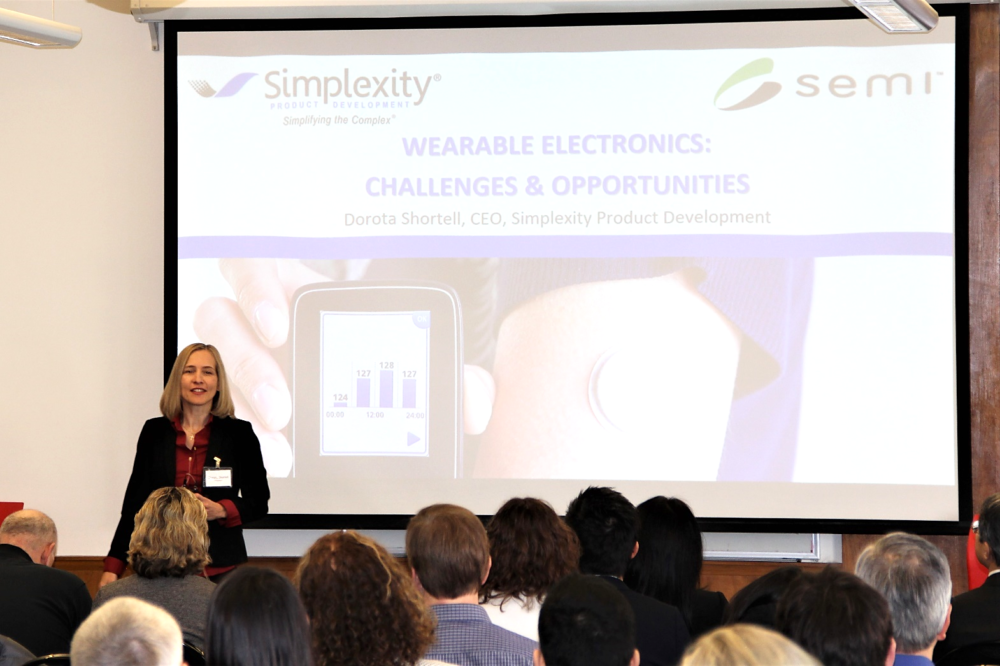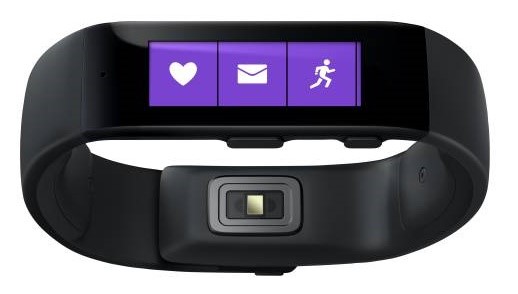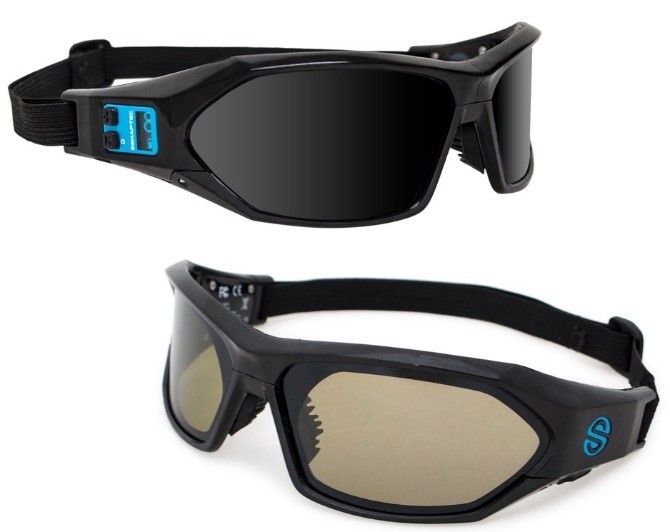Simplexity Product Development has been designing wearable electronic products since 2013 when we were selected by Microsoft as one of their key design partners for the Microsoft Band. The Microsoft Band is a fitness tracker that is connected to a user’s smart phone to also give email notifications, sync to their calendar, and has a built-in GPS sensor to allow athletes to track their run without taking their phone with them.
Image: Microsoft Band
Since then, we have designed many wearable electronic products, both in the medical and consumer space. This includes the Senaptec Strobe Eyewear, which has lenses that turn from clear to opaque to train a user’s brain connections, the Aira glasses that assist users who are blind or have visual impairments, various Virtual Reality headsets, sports wearables, and medical wearable patches like Proteus Digital Health medicine adherence product (which Simplexity engineers helped design while working at Proteus and at a predecessor design company).
Image: Senaptec Strobe Eyewear
Based on experience in designing wearable products, there are five main areas for engineers to consider:
-
- Power Consumption
Power consumption is extremely important since most wearable electronics are not connected to an external power source. Most often they rely on an integrated battery to power the device, usually a rechargeable battery. When designing for low power, calculations should be done to determine the power consumption based on the sensors, processor, and electronics in the product. There are tradeoffs between the amount of power electrical components consume and their functionality, so components should be selected carefully to consume the smallest amount to power that still provides the required feature set. Other aspects of the system also come into play in the optimization, for example how many of the computations need to be done real time on the processor vs. how many can be done in the cloud. In addition to power consumption, battery technology should also be evaluated for life, size, and extended time between charging. - Industrial design, component packaging, and usability
Since wearable devices interact very closely with the user’s body, the usability, form factor, and overall industrial design directly affect how well the product will be received in the market. It must be aesthetically pleasing, intuitive to use, and usually as small as possible. This means that packaging all the electronic components into as small a volume as possible while still maintaining electrical design best practices is critical. On the Senaptec Strobe Eyewear, we were able to package all the electronics onto an integrated flex circuit that spans from one side of the eyewear to the other without using any connectors, wires, or cables. This greatly helps with reliability and robustness. With regards to usability, intuitive interfaces like LEDs that change color, simple LCD displays, and a minimal number of buttons are key. Using sensors like accelerometers to figure out functions in context can help simplify the design and reduce the number of required user interface points. - Materials & environment
The materials selected for wearables need to be compatible with the human body. If the wearable device is medical in nature and needs FDA approval, then FDA-approved materials and adhesives should be used. When designing medical patches that will be adhered to a user’s body, it is important to decide if it is a one-time use patch or will need to be worn for multiple days or weeks. Among other things, this affects the level of water resistance that it must endure. For example, some patches we have designed are worn for a week and must be able to survive and function after a user takes a shower. Material considerations are also important when it comes to other environmental conditions, such as Ultraviolet radiation, vibration, and drop so the product can last to the life specifications. - Connectivity
Most wearable electronics have connectivity to a mobile device to allow for additional functionality, metrics and data. Even without a mobile app, we recommend that wearables should be designed with connectivity to allow for over-the-air reflash and updates to the product once it has already been purchased by the user. This can speed up development time as users can be instructed to connect to the internet to allow the latest version of firmware to be downloaded before the first use or additional features can be added throughout the life of the product. Whether the wearable device uses WiFi, Bluetooth, Bluetooth Low Energy (BLE), Near Field Communication (NFC), or other wireless protocol, the location of the wearable device antenna relative to the human body needs to be considered for signal propagation, interference, and safety reasons. - Sensors and algorithms
Wearable devices have sensors for collecting biometric, environmental, and motion data. The data coming from these sensors needs to be converted into useful metrics like activity level, body motion, and heart rate via custom algorithms. Once a preliminary algorithm has been developed, Simplexity’s process involves testing the algorithm against graded data sets that show both the correct and incorrect use cases. For example, certain data could be classified as walking, sitting, or running. If sufficient data is available, then machine learning can be used to improve the algorithms. There are tradeoffs between the cost, accuracy, size, and power consumption of the sensors and microprocessors, which in turn affect the amount of algorithm development that must be done.
- Power Consumption
A wearable device is an integrated system where the disciplines of electrical, firmware, software, mechanical, and systems engineering are all used to create an optimized product. The above considerations must be evaluated in the context of a well-integrated team which is constantly evaluating the tradeoffs and looking for the simplest solution that will satisfy the product and user requirements.




